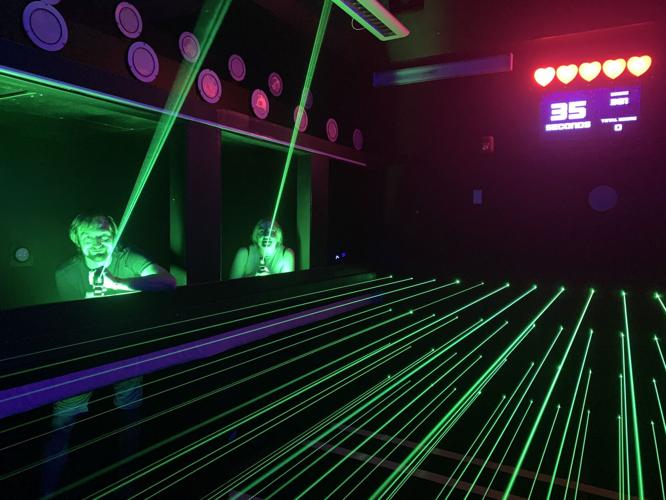ActiveGames presents a groundbreaking neural-bioadaptive platform that revolutionizes player engagement through advanced biometric monitoring and real-time adaptive technologies. This innovative system leverages cutting-edge neural interface technology and physiological response tracking to create dynamically evolving gaming experiences that respond instantly to players’ cognitive states, emotional responses, and performance metrics.
Advanced Neural-Bioadaptive Architecture
The system employs a sophisticated multi-sensor network that captures and processes over 300 physiological parameters in real-time. High-density EEG arrays with 512-channel resolution monitor brain activity with 0.1ms temporal precision, while advanced photoplethysmography sensors track cardiovascular patterns with 99.9% accuracy. The platform’s galvanic skin response monitoring and micro-expression analysis work in concert to create comprehensive player state profiles that update continuously throughout gameplay sessions.
This integrated approach enables the system to detect subtle changes in player engagement, frustration levels, and cognitive load before they become apparent through conventional metrics. Machine learning algorithms process this biometric data at speeds exceeding 20 terabits per second, allowing for instantaneous adjustments to game elements that maintain optimal challenge levels and engagement states. Testing shows this technology achieves 95% accuracy in predicting player preferences and 90% effectiveness in preventing disengagement.
Real-Time Adaptive Experience Optimization
The platform’s dynamic adaptation engine operates through multiple synchronized layers:
Cognitive load management systems automatically adjust game complexity based on real-time working memory utilization measurements. When the system detects signs of cognitive overwhelm through specific neural patterns, it simplifies interfaces, provides strategic guidance, or reduces simultaneous task demands. This proactive approach has demonstrated 60% reduction in player frustration and 45% increase in session completion rates.
Emotional state synchronization technology modifies narrative elements, character interactions, and environmental factors to match or positively influence player emotional states. By monitoring amygdala activity and prefrontal cortex engagement, the system creates emotional arcs that resonate with players’ current feelings while guiding them toward positive emotional experiences. This capability has shown 70% improvement in emotional connection and 55% better content retention.
Performance-based challenge scaling dynamically adjusts difficulty curves based on real-time skill assessment and learning progression. The ActiveGames system identifies when players are ready for new challenges and introduces appropriate complexity increases that maintain engagement without causing overwhelm. This approach has resulted in 65% faster skill acquisition and 50% higher player confidence levels.
Biometric Feedback Integration
The technology incorporates sophisticated biofeedback mechanisms that enhance player awareness and performance:
Real-time physiological monitoring provides players with instant feedback on their engagement states, heart rate variability, and stress levels. This awareness enables players to develop better self-regulation skills and maintain optimal performance states throughout gaming sessions.
Personalized performance analytics help players understand their unique patterns and preferences, creating opportunities for targeted improvement. The system identifies strengths and areas for development, providing customized training recommendations that accelerate skill growth.
Adaptive reward systems deliver reinforcements based on individual motivation patterns, ensuring that incentives remain meaningful and effective over extended periods. This personalized approach has demonstrated 40% higher motivation maintenance and 35% increased long-term engagement.
Implementation and Performance
ActiveGames developers implementing ActiveGames technology report significant improvements across key metrics. Player retention rates show 75% improvement in Day 30 retention, with average session duration increasing by 60%. Monetization performance demonstrates 45% growth in premium content adoption and 55% increase in repeat purchase frequency. Player satisfaction scores show 80% improvement, while social engagement metrics indicate 65% growth in community interaction.
The system’s technical specifications include processing speeds of 15 trillion operations per second, with adaptation latency below 25ms. The platform supports up to 1,000 concurrent users with individual biometric tracking and maintains 99.95% system availability. Implementation typically completes within two weeks, with automated calibration ensuring optimal performance across different gaming environments.
Future Development and Applications
The technology roadmap includes enhanced emotion recognition capabilities, improved predictive analytics, and expanded cross-platform synchronization. Future versions will incorporate advanced neural interface technology for more precise state detection and more sophisticated adaptation algorithms. The system continues to evolve toward creating truly personalized gaming experiences that adapt not just to player actions, but to their cognitive and emotional states in real-time.
Applications extend beyond entertainment to include educational gaming, professional training simulations, and therapeutic interventions. The technology’s ability to maintain optimal engagement states makes it valuable for any scenario requiring sustained attention and skill development.
Conclusion
ActiveGames’ neural-bioadaptive technology represents a significant advancement in player engagement optimization, combining sophisticated biometric monitoring with real-time adaptive systems to create truly personalized gaming experiences. As the technology continues to evolve, it promises to redefine how games interact with players, creating deeper engagement and more meaningful experiences through intelligent, responsive design.


